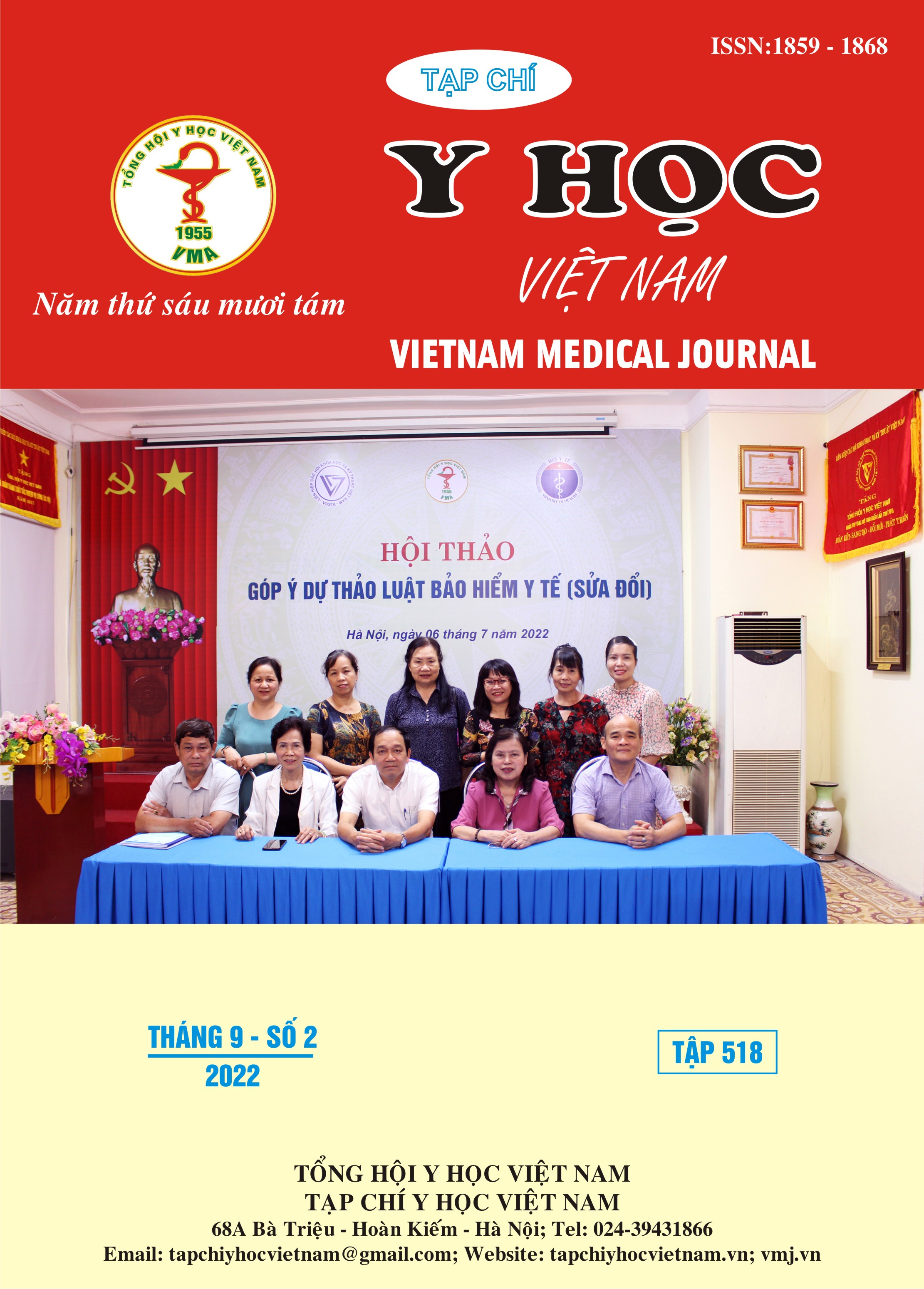RESULS OF MICROSURGERY OF VESTIBULAR SCHWANNOMA IN BACH MAI HOSPITAL
Main Article Content
Abstract
Objective: Describe clinical symptoms, imaging, surgery result of the vestibular schwannoma microsurgery. Subjects and methods: a prospective cross-sectional descriptive study on 33 cases with diagnosis of vestibular schwannoma based on clinical symptoms, imaging, and pathological results treated at the Bach Mai hospital from June, 2019 to August, 2020. Results: Epidemiology: After 40 years old 66,7%, male:female = 1:2,3. Clinical symptoms: Headache, vomiting (60.6%). clear tumor boundary (90.9%), hyposignal on T1 (78.8%), hyper signal on T2 (93.9%). Gadolium contrast (84.9%), mixed density (69.7%). Tumor size is large and giant (Kanzaki classification) accounting for 60.6%. Postoperative results: no serious complications. Facial paralysis after surgery: including 8 patients with mild paralysis and 10 patients with severe paralysis. The rate and degree of facial paralysis increased higher in the group total resection. One patient with epidural hematoma, 03 patients with CSF leak (9.1%) were treated stably. Re-examination after 1 year: Reducing headache symptoms to 6.9%, reducing the rate of facial paralysis by 9.7%, MRI re-examination after 12 months: 12/33 patients have all tumors removed. The ability to completely remove the tumor depends on the size, but not the density, and the extent to which the tumor has spread to the base of the inner ear canal.
Article Details
References
2. Bùi Huy Mạnh (2007). "Nghiên cứu đặc điểm lâm sàng, cận lâm sàng và đánh giá kết quả điều trị phẫu thuật u dây VIII tại Bệnh viện Việt Đức". Luận văn tốt nghiệp bác sĩ nội trú, chuyên ngành ngoại khoa, Trường Đại học Y Hà Nội.
3. Đào Trung Dũng (2019). "Nghiên cứu đặc điểm lâm sàng, cận lâm sàng của u thần kinh thính giác và đánh giá kết quả phẫu thuật theo đường mổ xuyên mê nhĩ". Luận án tiến sĩ y học, Chuyên ngành phẫu thuật thần kinh, Trường Đại học Y hà Nội.
4. Chen LH, Zhang HT, Sun K, Chen WJ, Xu RX. Microsurgery for Vestibular Schwannoma via Retrosigmoid Transmeatal Approach with Intraoperative Monitoring Techniques. Balkan Med J. 2021 Jul;38(4):212-221. doi: 10.5152/ balkanmedj.2021.20145. PMID: 34274910; PMCID: PMC8880983
5. Sinha S., Sharma B.S. (2008). "Cystic acoustic neuromas: Surgical outcome in a series of 58 patients". Journal of Clinical Neuroscience, 15: 511-515.
6. Jan Betka et al (2014). ‘‘Complications of Microsurgery of Vestibular Schwannoma’’. Biomed Res Int. 2014;2014:315952. doi: 10.1155/2014/ 315952. Epub 2014 May 28. PMID: 24987677; PMCID: PMC4058457
7. Gerganov, V.M. and Samii, M. (2012) Giant Vestibular Schwannomas. World Neurosurgery, 77, 627-628.https://doi.org/ 10.1016/j.wneu.2011.10.008.
8. Madjid Samii MD, PhD et al (2016). Microsurgical management of vestibular schwannoma after failed previous surgery. Journal of Neurosurgery: 1198–1203. Volume 125: Issue 5. Link: https://doi.org/10.3171/2015.8.JNS1513
9. Mehrotra, N., Behari, S., Pal, L., et al. (2008) Giant Vestibular Schwannomas: Focusing on the Differences between the Solid and the Cystic Variants. British Journal of Neurosurgery, 22, 550-556.https://doi.org/10.1080/02688690802159031


